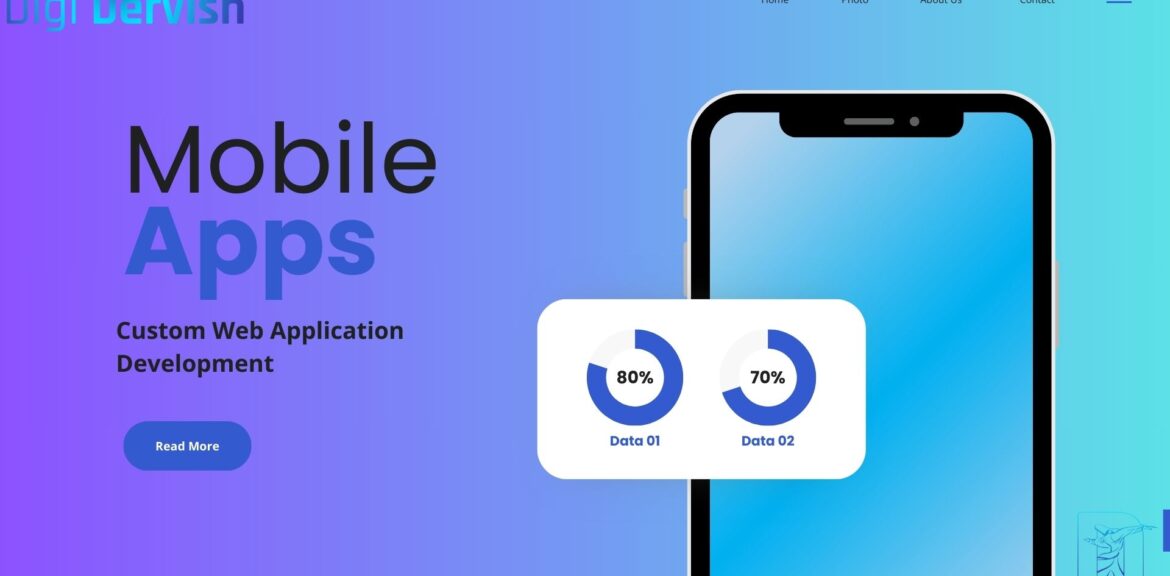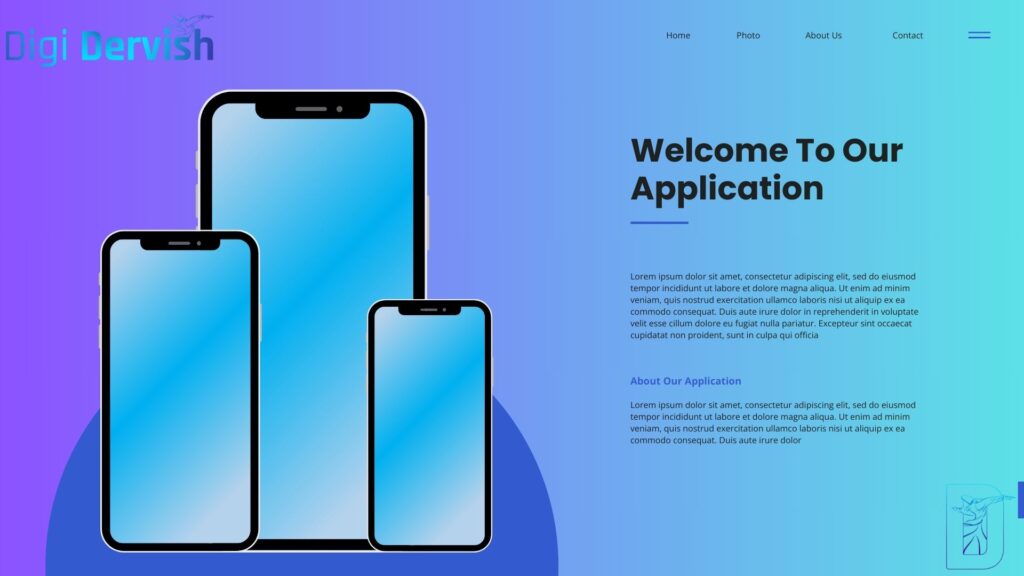
The digital-first world, businesses rely on web applications development to engage customers, streamline operations, and gain a competitive edge. While off-the-shelf solutions can meet generic needs, they often fall short when it comes to addressing specific requirements or scaling with business growth. This is where custom web application development shines, offering tailored solutions to meet unique demands.
This comprehensive guide will delve into:
- What custom web application development is.
- How to create your own web application.
- The costs associated with building a custom web app.
- What makes custom-developed applications different from generic ones?

By the end of this guide, you’ll understand why custom web application development is a game-changer and how it can empower businesses in any industry.
What is Custom Web Application Development?
Custom web application development refers to the process of designing and building web-based software solutions tailored to the unique needs of an organization or individual. Unlike pre-packaged software, custom web applications are created from the ground up, ensuring that they align perfectly with specific business processes and goals.
Key Features of Custom Web Applications
- Tailored Functionality: Every feature is designed to meet a specific requirement.
- Scalability: Applications can evolve with your business.
- Seamless Integration: Custom solutions can integrate with existing tools and systems.
- Enhanced Security: Security measures are built to address unique risks.
- Optimized User Experience: Applications are designed with the end-user in mind, ensuring maximum usability.
Examples of Custom Web Applications
- Customer Portals: Allow customers to access account details and interact with support teams.
- E-commerce Platforms: Designed for unique product catalogs, payment methods, or regional requirements.
- Internal Management Tools: Custom dashboards for tracking KPIs, managing employees, or monitoring inventory.
How Can I Create My Own Web Application?
Building a custom web application might seem daunting, but with the right approach, it becomes manageable. Here is a step-by-step process:

1. Define Your Goals and Requirements
Start by identifying the purpose of your web application. What problems will it solve? Who are your target users? Create a detailed list of requirements, including:
- Core functionalities.
- Target devices and platforms.
- Security needs.
2. Conduct Market Research
Analyze your competitors and identify gaps in their solutions. Understanding market demands will help you design a more effective application.
3. Create a Wireframe
Wireframes are visual representations of your app’s layout. Tools like Figma or Adobe XD can help you map out the user interface (UI) and user experience (UX).
4. Choose the Right Technology Stack
Your technology stack depends on your app’s complexity and requirements. Common options include:
- Frontend: React, Angular, or Vue.js.
- Backend: Node.js, Python (Django), Ruby on Rails, or PHP.
- Database: MySQL, MongoDB, or PostgreSQL.
5. Partner with a Development Team
Hire a skilled development team with experience in custom web applications. You can choose between:
- Freelancers.
- Development agencies.
- In-house teams.
6. Develop and Test
Develop your application in stages and conduct rigorous testing for:
- Functionality.
- Performance.
- Security.
7. Deploy and Maintain
Launch your application on a reliable server. Post-deployment, ensure regular updates to fix bugs, improve performance, and add new features.
How Much Does it Cost to Build a Custom Web App?
The cost of building a custom web application can vary widely based on several factors, including complexity, features, and the development team’s expertise.
Key Cost Factors
- Complexity of Features:
- Basic Applications: Simple apps with limited features may cost $10,000 to $30,000.
- Mid-Tier Applications: Moderate complexity apps range from $30,000 to $100,000.
- High-End Applications: Complex apps with advanced features can exceed $100,000.
- Design Requirements:
- Custom UI/UX designs require more investment.
- Development Team:
- Freelancers are typically cheaper but may lack scalability.
- Agencies offer a mix of affordability and expertise.
- In-house teams can be costly due to overhead expenses.
- Ongoing Costs:
- Hosting and server maintenance.
- Updates and feature enhancements.
- Customer support and troubleshooting.
Cost Breakdown
| Component | Estimated Cost Range | ||
| Development | $10,000 – $100,000+ | ||
| Design | $2,000 – $15,000 | ||
| Testing and QA | $1,000 – $10,000 | ||
| Maintenance (Yearly) | $2,000 – $20,000 |
What is a Custom-Developed Application?
A custom-developed application is a software solution specifically built to meet the unique needs of an organization or individual. Unlike generic applications, which cater to broad audiences, custom-developed apps focus on providing personalized features and seamless integration.
Characteristics of Custom-Developed Applications
- Purpose-Built: Designed to address specific challenges.
- Exclusive Features: Incorporates functionalities unavailable in off-the-shelf solutions.
- Brand Alignment: Reflects your company’s identity and values.
Advantages Over Off-the-Shelf Solutions
| Custom Applications | Off-the-Shelf Solutions |
| Tailored functionality | Limited to generic use |
| High scalability | Limited scalability |
| Exclusive features | Shared functionalities |
| Higher upfront cost | Lower initial cost |
Real-World Examples
- E-commerce Giants: Platforms like Amazon rely on custom applications to deliver unique customer experiences.
- Corporate Tools: Businesses use custom CRMs and ERPs to manage workflows efficiently.
Challenges in Custom Web Application Development
1. High Initial Costs
Custom solutions require significant investment upfront. However, they provide better ROI over time.
2. Longer Development Time
Building an application from scratch takes time. Agile methodologies can help streamline the process.
3. Expertise Requirements
Custom development demands skilled professionals, which can be hard to find.
4. Maintenance Needs
Ongoing updates and support are crucial to ensure the app’s longevity.
Why Choose Custom Web Application Development?
Custom web application development is ideal for businesses looking to:
- Address Unique Challenges: Solve problems specific to their operations.
- Achieve Scalability: Ensure their application grows with their needs.
- Enhance User Experience: Provide intuitive and seamless interactions.
- Stay Competitive: Differentiate themselves in a crowded marketplace.

Conclusion
Custom web application development offers businesses the opportunity to create tailored solutions that align perfectly with their goals and requirements. While it involves higher costs and longer timelines, the benefits far outweigh these challenges. By investing in a custom web app, businesses can enhance efficiency, improve user experience, and gain a competitive advantage.
If you’re ready to transform your ideas into a robust web application, Digi Dervish is here to help. Our team of experts specializes in creating custom web applications that drive results. Contact us today to get started!



